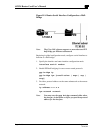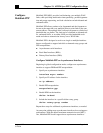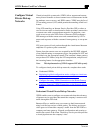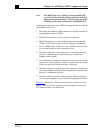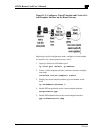
AI2524 Router Card User’s Manual
Page 11-26 August 1997
2524UM
Configure Virtual
Private Dial-up
Networks
Virtual private dial-up networks (VDPN) allow separate and autono-
mous protocol domains to share common access infrastructure includ-
ing modems, access servers, and ISDN routers. VPDN uses the Level
2 Forwarding protocol (L2F) which permits the tunneling of link level
frames.
Using L2F tunneling, an Internet Service Provider (ISP) or other ac
cess service can create a virtual tunnel to link a customer's remote sites
or remote users with corporate home networks. In particular, a net-
work access server at the ISP's Point of Presence (POP) exchanges
PPP messages with the remote users and communicates by L2F re-
quests and responses with the customer's home gateway to set up tun-
nels.
L2F passes protocol-level packets through the virtual tunnel between
endpoints of a point-to-point connection.
Frames from the remote users are accepted by the ISP POP, stripped
of any linked framing or transparency bytes, encapsulated in L2F, and
forwarded over the appropriate tunnel. The customer's home gateway
accepts these L2F frames, strips the L2F encapsulation, and processes
the incoming frames for the appropriate interface.
Note: This implementation of VPDN supports PPP dial-up only.
To configure virtual private dial-up networks, complete these tasks:
z
Understand VPDNs
z
Beginning in global configuration mode, configure a virtual tem-
plate for interfaces on a home gateway access server:
z
Configure Incoming VPDN Connections on the Home Gateway
z
Configure Outgoing VPDN Connections on the Network Access
Server
Understand Virtual Private Dial-up Networks
VPDN enables users to configure secure networks that take advantag
of internet service providers that tunnel the company's remote access
traffic through the ISP cloud.
Remote offices or mobile users can connect to their home network
using local dial-up services of third parties. The dial-up service pro-
vider agrees to forward the company's traffic from the ISP POP to a
company-run home gateway. Network configuration and security re-
main in the control of the client. The dial-up service provider provides
a virtual pipe between the company's sites.



